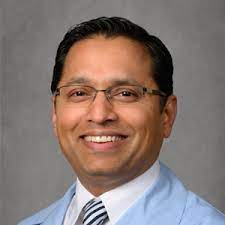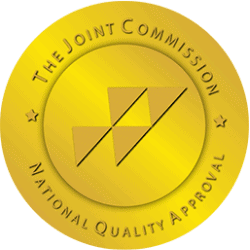Like much of America, South Carolina is suffering the devastating consequences of the opioid epidemic. A study by the CDC found that South Carolina overdose death rates jumped 42.5 percent from 2006 to 2016, the decade preceding the peak of overdose deaths in the US. Drugabuse.gov reports that in 2017, there were 749 overdose deaths involving opioids in South Carolina.

Top 5 Most Addicted Cities in South Carolina
Columbia, South Carolina
Columbia is South Carolina’s most populated city and serves as the state’s capital. Located in Richland County, it is one of three major metropolitan regions in South Carolina.
The overdose rate in Richland County is slightly higher than the national average. In 2017, the DAODAS published a study that traced 71 of Richland County’s 93 fatal overdoses to opioids. More than half of these individuals tested positive for fentanyl. Following the trend from 2016 to 2017, opioid overdoses increased by 69%.
There are several treatment centers in Columbia and surrounding areas, so residents have options when it comes to getting help. Together with neighboring Lexington County, Richland County established the LRADAC, which is a non-profit dedicated to helping prevent and treat addiction in the area.
Charleston, South Carolina
According to an article from The Washington Post, there were 596,206,074 prescription pain pills supplied to Charleston County between 2006 and 2012. That equates to 248 pills per person per year, which makes the Charleston area one of the most opioid-dense counties in the state and the nation. Given these numbers, it’s no wonder prescription medications caused 84% of overdoses in 2017 in Charleston county.
In terms of overdose fatalities, Charleston County ranks among the most affected areas South Carolina. There were 118 total drug overdoses in 2017 in Charleston county. Despite these statistics, Charleston county has fewer options than other metropolitan areas in the state when it comes to treatment. At the time this article is published, there are seven treatment providers in the entire county registered with SAMHSA.
North Charleston, South Carolina is considered a distinct city, but it is part of the Charleston Metropolitan statistical area. Crime rates in North Charleston are higher than average, and drug trafficking in the area is a major concern.

Greenville, South Carolina
Located in upstate South Carolina, Greenville is yet another area feeling the effects of the addiction epidemic. Total overdose deaths in Greenville County reached 107 in 2017 (South Carolina Department of Alcohol and Other Drug Abuse Services). Opioids caused 73 of those deaths. In response to these numbers, The Greenville News reported that the area is one of the worst in South Carolina when it comes to opioid overdose deaths. Numbers from DAODAS state that in 2017, 630 individuals were hospitalized for opioid overdose and EMS administered naloxone 857 times.
Historically, overdose death rates in Greenville County have been higher than state and national averages. There is a high disparity between the sexes, as well. Males overdosed from opioids roughly twice as often as females in Greenville County.
Myrtle Beach, South Carolina
Myrtle Beach is one of South Carolina’s most popular tourist destinations, known for its long, sandy beaches. Every year, Myrtle Beach draws millions of vacationers to Horry county.
While Horry County has historically been one of the worst areas in South Carolina for fatal drug overdoses, recent efforts by the county have managed to turn the trend around. In the past few years, opioid-related deaths have decreased by almost 24% from 2016 to 2017, due in part to the creation of the Opioid Emergency Response Team (DAODAS). The response team aims to provide education and prevention for opioid-abuse in the area. Despite this trend, Horry county remains one of the top three deadliest counties when it comes to drug overdoses.

Georgetown, South Carolina
Of all the counties in South Carolina, Georgetown is one of the most affected by the sweeping tide of opioids. During the height of the epidemic in 2017, Georgetown had the highest rate of opioid-related overdose hospital visits. However, the number of overdose deaths decreased between 2016 and 2017, dropping more than 45% according to the DAODAS.
How many rehabs are in South Carolina?
The state of South Carolina has a population of just over five million people and is home to 108 addiction treatment centers. (2017 State Profile — United States and Other Jurisdictions). But, only 30 of these centers offer inpatient rehabilitation, which many studies show is a more effective form of addiction treatment. According to the report, there were 16,844 clients in substance abuse treatment in March 2017.
Gaps in mental health and substance abuse treatment are likely making the addiction problem in South Carolina worse. Over half of substance abuse treatment facilities in South Carolina reported that they do not offer pharmacotherapies in their treatment programs (SAMHSA). Additionally, less than a quarter of substance abuse treatment facilities in South Carolina provided comprehensive mental health assessment or diagnosis. It is estimated that almost half of individual’s with substance abuse issues have a co-occurring mental health disorder. Providing more comprehensive dual-diagnosis mental health and addiction treatment in this area could help curb the effects of the epidemic.
Looking Ahead
Despite the discouraging statistics, the state of South Carolina is taking action. SCRIPTS (South Carolina Reporting and Identification Prescription Tracking System) requires pharmacies that dispense prescription drugs to check a patient’s prescription history in a centralized database. This system discourages patients from “doctor shopping” or filling fraudulent prescriptions.
In May 2017, the South Carolina House of Representatives Opioid Abuse Prevention Study Committee held its first meeting to discuss statewide opioid prevention and education. By January of 2018, the committee successfully developed and passed ten pieces of legislation that will help to combat the epidemic. The laws were met with widespread support in the South Carolina House of Representatives and the Senate.





